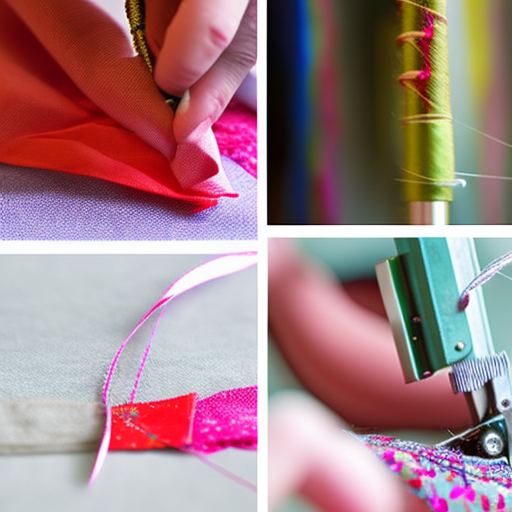
Introduction
Creating costumes for the theatre is a remarkable art that requires precise sewing techniques and attention to detail. From period pieces to fantastical worlds, costumes play a significant role in transforming actors into their characters. In this article, we will explore some essential sewing techniques specifically tailored for theatrical costume design.
Fabric Selection
Choosing the right fabric is vital to achieve the desired look and functionality of a costume. While considering the aesthetics, it is equally important to consider durability, flexibility, and breathability. Fabrics like cotton, linen, and silk are commonly used for their lightweight nature and draping abilities. Alternatively, sturdy fabrics like polyester blends or canvas can withstand tough performances.
Pattern Making
Pattern making is the foundation of costume creation. Taking accurate measurements is crucial to ensure a perfect fit. Basic pattern manipulation techniques such as darting, gathering, and pleating are often employed. Additionally, creating costume patterns that allow for quick changes backstage is essential to accommodate the fast-paced nature of theatre.
Seam Finishes
A well-finished seam adds durability and a professional touch to costumes. For theatrical costumes, where garments undergo heavy use and washing, selecting appropriate seam finishes is crucial. Options include French seams, zigzag stitches, and serging. The chosen finish should be based on the fabric’s characteristics, desired appearance, and the costume’s overall design.
Detailing and Embellishments
Costumes often require intricate detailing and embellishments to bring the characters to life. Techniques like appliqué, hand embroidery, beading, and sequinning are commonly employed. These elements, combined with skillful sewing, can evoke a sense of time and place, enhancing the visual impact of the costumes on stage.
Fasteners and Closures
Fasteners and closures need to be both secure and easy to manipulate during quick costume changes. Hooks and eyes, snap fasteners, Velcro, and zippers are commonly used closures. However, their selection depends on the garment style, the character’s movement requirements, and the desired aesthetic of the costume.
Conclusion
Designing and sewing costumes for the theatre is a labor of love that requires mastering various techniques. From fabric selection to intricate detailing, every step contributes to the final product that helps transport both actors and audiences to another world. By employing these essential sewing techniques, costume designers and creators can ensure that their theatrical creations are not only visually captivating but also functional and durable.




